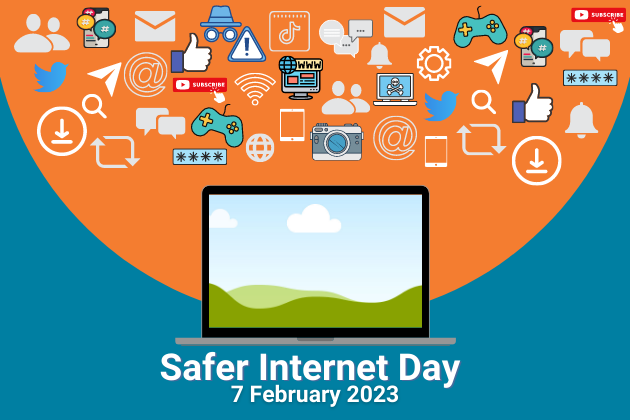Safer Internet Day: Making space for conversations about life online
25 January 2023

The use of the internet and other digital devices is on the rise and creates fresh challenges for young people and the difficulties they can face online. Safer Internet Day takes place on 7 February and is a chance to highlight how young people can build healthier relationships with online activities such as gaming, messaging and emailing carried out using internet services.
The UK Safer Internet Centre, who coordinate the UK version of the awareness day, provide all sorts of interactive resources for use in the primary classroom, such as presentations, games and quizzes to support children’s learning of online safety.
We’ve collated a range of useful resources to help you plan your lessons.
Teach Computing Curriculum resources
The Teach Computing Curriculum provides a range of resources for each year group including lesson plans and activity sheets. We have picked out two key resources which explore how to use technology safely and the accuracy of the internet.
Computer systems and networks around us (KS1)
How is information technology being used for good in our lives? Help learners explore the benefits of IT to our society in places like shops, libraries, and hospitals. Discuss the ways to use technology responsibly and make smart choices when using it.
Can I believe what I read? (KS2)*
Not everything on the internet is true, honest or accurate. Help your pupils recognise false information by seeing how web searches can return ambiguous and occasionally misleading results. The practical activity will demonstrate how quickly information online can spread beyond control.
*This session is the final one in a six session teaching unit provided by the NCCE
STEM Learning resources
STEM Learning has an extensive resource collection covering different topics including internet safety. We have collated resources for both key stages which explore different areas related to Safer Internet Day. They vary in how they are delivered to students so you can pick out the best option for your class.
Get pupils to practice coding skills and refresh their knowledge of online safety whilst enjoying a game of snakes and ladders. Create the correct algorithm and program to send Bee-Botsto the correct square, climbing any ladders and going down snakes. If pupils land on squares with online safety ‘Do and Don’t’ tips they discuss these with their partner.
Online safety story created by Childnet International for 3 to 7 year olds. Join in with Mummy Penguin’s song and follow the adventures of Smartie the Penguin as he learns how to be safe on the internet.
Explore this set of 15 different e-safety scenarios for pupils to act out in the classroom. This could be used in a PSHE or computing lesson to reinforce ways to keep safe online.
What is personal information? Ask this question in your classroom and give pupils the opportunity to discuss and share their own understandings of the subject. Encourage them to think about what information should be shared and what should be kept private.
Help pupils develop their digital literacy using Mars exploration as the context. The activity teaches them to use the search engine and how to recognise reliable and trustworthy sources online.
Other useful resources
There are a range of websites available to support with the teaching of internet safety through providing information and resources which can be shared with young people. The websites featured below are a great starting point to inspire conversations with your students.
Education for a Connected World framework, developed by the UK Council for internet safety supports learning from 4-18 years of age. It is aimed at equipping children and young people to live knowledgeably, responsibly and safely in a digital world. The Project EVOLVE Toolkit supports this framework with progressive resources which prompt discussion and reflection, shape thinking, and challenge misconceptions.
Common sense education has a whole host of resources which support online safety including some really useful videos for younger learners. These resources can help young people develop as digital citizens throughout a progressive series of lessons and activities.
Barefoot computing has lots of unplugged activities which support children’s understanding on online safety. Resources are free to access once logged in.
Childnet offers a number of useful resources for use with young learners. They also offer a digital leaders programme which empowers children to champion safe use of the internet with their peers.
There are lots of great story books that support understanding of internet safety for young people. The Education People’s Online Safety Storybooks page gives ideas of books and how to use them in a classroom.